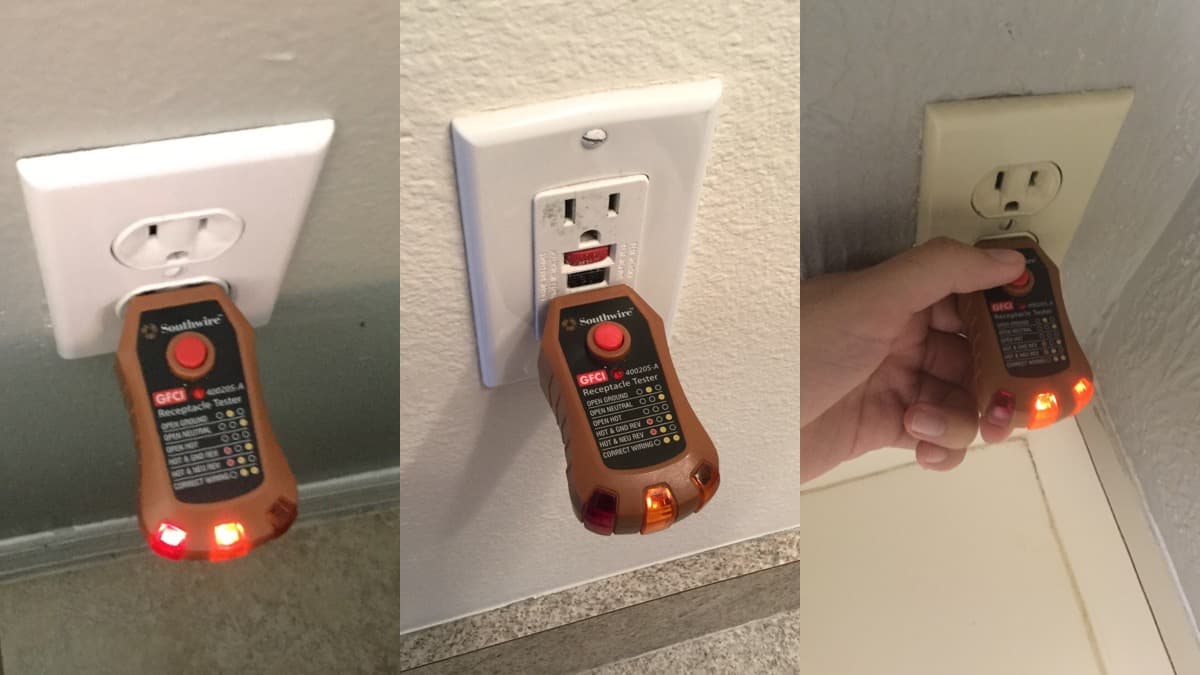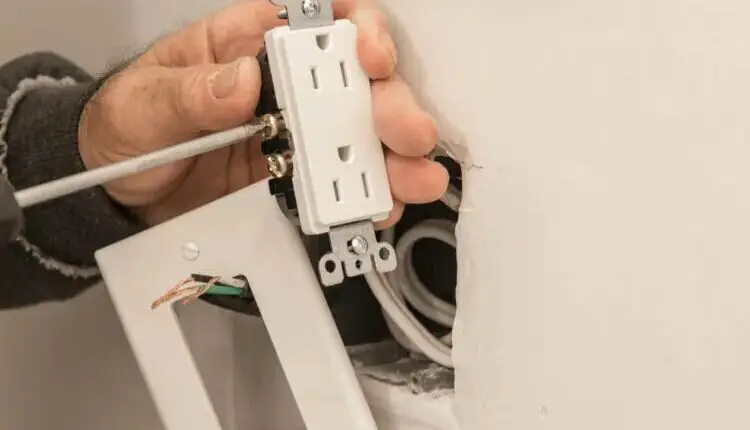Open Neutral Outlet | Definition & Process of Fixing an Open Neutral
Articles, products, and services offered on this site are for informational purposes only. We are part of the Amazon Services LLC Associates Program, an affiliate advertising program. Amazon.com is compensated for sales resulting from links on our website.
Please review our disclaimer before acting based on anything you read or see.
To begin troubleshooting and correcting an open neutral, you must first identify it. You can detect the wires by their different colors. The trio consists of a black wire, a red wire, and a white-coated wire. So, what exactly is an open neutral outlet?
The neutral wire is open when two points on it don’t have a connection. The hot wire powers all receptacles, lights, and appliances. The neutral wire completes the return path to the electrical panel. If you disconnect or lose the neutral, lights or appliances may flicker or operate inconsistently.
The black, red, and white neutral wires are typically close together. The black and red cables carry an electrical current. The neutral, on the other hand, does not appeal. The neutral’s primary function is to complete the circuit by returning the flow to the panel.
What is Open-Neutral Outlet?

An open neutral in a 120-volt circuit indicates that the white wire (neutral) has problems. No electricity returns to the panel when the neutral brakes, resulting in a circuit breaker.
Because the neutral wire’s job is to return current to the power source, you will turn your power off if it breaks. Furthermore, some of the energy could return to the system via the system’s single live or ground wire. As a result, you may notice a difference in the brightness of your home’s lights.
The essential functions of each wire in an American electrical system, including how it functions as a neutral wire, are as follows:
The hot (black) wire transports electricity from the power source to the outlets in your home. It is the most dangerous wire in the circuit because it always conducts electricity.
When the circuit finishes, the white neutral wire returns power to the source and allows electricity to flow.
Although electricity does not pass through the ground wire, it is still necessary for your safety. During an electrical malfunction, such as a short circuit, it returns the electricity to the ground, restoring it.
How Open Neutrality Impacts Us
When the neutral at a particular device is, the white wire will be disconnected. Even though the hot wire can still carry electricity to the device, it cannot return to the panel. However, even though it is no longer operational, the device is still capable of shocking you. The same problem exists in all devices connected after it in the circuit.
If the neutral wire connecting the panel to the line transformer breaks, the panel may have an open neutral. The main effect is that the lights in the house dim and brighten randomly. Some lights can burn out if they become too bright.
Purpose of the Neutral Wire
The North American standard, which is 240 volts, has two 120-volt circuits. Many European and other countries have adopted the 240-volt standard over the 120-volt standard for efficiency reasons. Every household in North America has access to both 240-volt and 120-volt power.
A 240-volt voltage runs between two hot wires, one black and one red, and feeds electricity into the panel. It would be best to connect 240-volt appliances to both wires, such as a dryer or a stove.
The neutral wire supplies power to 120-volt devices like light bulbs and small appliances. To make a 120-volt circuit, connect a device to one of the hot wires and the neutral wire, which is the potential difference between each hot leg of the panel and the ground.
Cost to Fix an Open Ground or Open Neutral
You may require a receptacle outlet device or wiring changes depending on your situation. Depending on the complexity of the task, service charges for minor labor and minimal material costs can range from one to two hours in length.
A GFCI outlet can cost up to $20, whereas a standard electrical outlet can cost as little as $2 to $3. There is no such thing as a one-size-fits-all price for electrical services. Finally, depending on the difficulty, length of time required, and materials, you could spend anywhere from $75 to $350.
Detecting an open ground or open neutral in a branch circuit
First, you must understand that you are dealing with an open area. You can identify this issue in one of two ways.
Turn off the circuit’s power supply first (ground pin) to check for a connection between the neutral and bond wires. Circuits with proper wiring will always have continuity. If there isn’t one, you’ll need to figure out why.
In all homes, the service neutral is bonded to the ground. Because most of these connections are inside your meter base or in the main panel enclosure, you will not see this connection. Don’t even try to remove the central panel cover because it will not stop power from flowing to the primary side of the panel. Contact your hydro utility company and request disconnecting your electrical service from the outside.
The second option, which is much easier than the first, is to use a receptacle testing tool. With their assistance, they can detect problems with GFCIs, open neutrals, and even reversed wiring of receptacles. This tester is a low-cost, easy-to-use device designed to test a large number of cases quickly.
How to Fix an Open Neutral

Check the voltage.
The voltage between neutral and ground in a standard outlet should be zero volts. The hot end, as well as the grounding wire, requires a 120-volt supply. Use a multimeter. This will allow you to check your wire’s voltage. You have a broken neutral wire if your neutral voltage is 120 volts.
Turn off the power
When working with electrical equipment, it is critical to turn off the power after checking the voltage. This keeps you from suffering a potentially fatal injury, such as being electrocuted. It is essential to turn off your power supply at the source.
Remove the Outlet Cap
In this endeavor, your screwdriver is your best friend. Screw count varies between outlets. When removing all the screws, remove the cover (the outlet one).
Make Sure There is No Voltage
After opening the outlet, use a voltage tester to ensure that the circuit is dead. If the course is slow, the tester should display a value of 0.
Unscrew the receptacle to remove it.
After removing the outlet cover and checking the voltage, you must unscrew the receptacle. Remove any screws that hold the case to the wall with a screwdriver.
Check to see if there is a neutral open.
By gently pulling the receptacle, you can see the exposed wires. Make sure you locate the neutral. The neutral, also known as the white wire, should be visible.
Reconnect the wires
Reconnect the neutral wire if you see it disconnected at this point. You will thus resolve the issue of open neutrality. Before leaving the room, ensure the receptacle and outlet cover are correctly reinstalled. If you see the wire connected, proceed to the next step.
Check the container.
Try bridging across the receptacle to see if it is defective. Receptacles that can be bridged and read as 120 volts must be replaced.
Replacing the receptacle (if Necessary)
It is critical to remember the location of the wires (black and white) on the box. You should remove the cables with caution.
When installing the new box, you will also use white screws and check the gold ones.
Investigate the previous waste container. Examine the receptacle’s break-off tabs to ensure they are all intact. If they’ve already been broken off, make sure to do the same on the new box.
Look for Alternative Supply Sources (if you need them)
If you find this location does not have the problem, it is best to look into other options. Follow the steps outlined above.
Power Switch On/Off
You can restore power after locating and repairing the open neutral.
Frequently Asked Questions
Is a Breaker Capable of Opening a Neutral?
An open neutral downstream can appear by an incorrect connection at the electrical outlet. This is especially true when using an electrical outlet connection to create a neutral path.
In reality, connecting a neutral in this way is not advised. Instead, direct the neutral to the outlet box with a wire nut and pigtail. Of course, you can generate an open neutral in various ways.
What does an electrical outlet have?
An outlet is held in place by two screws on each side. As can be seen, two screws connect to the upper and lower outlets.
A single wire can be attached to either screw using the tab. This will provide power to both receptacle outlets. As a result, they will be able to function independently.
Bottom line
An open neutral in your home’s wiring can occur for various reasons. When an open neutral is confirmed, troubleshooting can begin. Troubleshooting complex wiring takes a lot of time and effort.
You may have to go through all of your working and dead equipment to find the source of the problem. The most convenient option is to call an electrician. You should not attempt to repair electrical issues because you could cause significant damage.
An open neutral is a dangerous situation.” If the neutral is empty, the circuit is incomplete. The most common color schemes for wires are red, black, and white. In other words, white is a neutral color with no electrical charge.



Comments are closed.